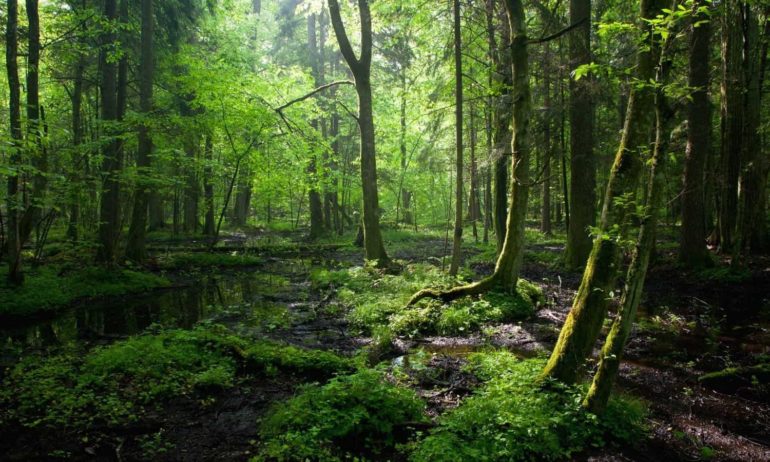This is a guest post by José Graziano da Silva, Director-General of the U.N. Food and Agriculture Organization (FAO).
Good news is being delivered this week at the World Forestry Congress in Durban, South Africa: the rate of net global deforestation has slowed down by more than 50 percent since 1990.
In another positive development, the net loss of natural forests declined from 8.5 million hectares per year between 1990 and 2000 to 6.6 million hectares per year between 2010 and 2015.
These results have contributed to reducing total carbon emissions from forests by more than 25 percent between 2001 and 2015.
The findings were revealed in the Global Forest Resources Assessment, an effort led by the U.N. Food and Agriculture Organization (FAO) that is the result of the most comprehensive worldwide survey of forests ever conducted.
The fall in deforestation comes at a time when more wood than ever before is being used, as the global human population is more than one-third larger now than it was in 1990. This shows that sustainable forest management works and that political will and concrete action can make a difference. Today, forest management plans cover more than half of the global forest area.
These findings provide an important foundation to build on as the international community is set to adopt the Sustainable Development Goals (SDGs) later this month. Forests are an important element in reaching the goals that global leaders are setting.
This post-2015 development agenda will feature 17 SDGs that aim to end extreme poverty and hunger by 2030 and promote prosperity and harmony with nature.
Among the most pressing of the challenges facing humankind is feeding a global population projected to increase from over 7 billion today to over 9 billion by 2050. This challenge is made even greater by the threats of climate change, increasing water and land scarcity, soil and land degradation, and a deteriorating natural resource base.
We cannot meet the challenge without forests. They cover nearly one-third of the planet´s land; are home to over 80 percent of the world´s biodiversity, representing an irreplaceable genetic resource for the future development of agricultural crops; and hold about three-quarters as much carbon as the Earth’s entire atmosphere, thus mitigating climate change.
Over the last years we have been protecting our forests better. About 13 percent of the world’s forests (more than half a billion hectares) are now designated primarily for biodiversity conservation, with Africa reporting the highest increase in the last five years.
There has also been a remarkable increase in the forest area covered by recent or ongoing national inventories – about four-fifths of the world’s forests in 112 countries have initiated or conducted forest inventories in the last five years.
But much remains to be done. While in the last five years total forest area increased by 4 million hectares in Asia, 1.9 million hectares in Europe, 1.5 million hectares in Oceania and 0.7 million hectares in North America, it fell by 14.2 million hectares in Africa and 10.1 million hectares in South America.
The Global Forest Resources Assessment also confirmed that, despite considerable conservation efforts, the threat to biodiversity persists and is likely to continue. And, despite the growing use of forest management plans, implementing them effectively is still a challenge in many countries.
That is why we need to use the momentum generated by the SDGs to strengthen sustainable management of forests. The importance of this is clearly recognized in SDG 15, which calls on us to “protect, restore and promote sustainable use of terrestrial ecosystems, sustainably manage forests, combat desertification, halt and reverse land degradation, and halt biodiversity loss”.
Moreover, sustainably managed forests can make major contributions to all SDGs. For example, forests are recognized in SDG 6, which aims to ensure the availability and sustainable management of water and sanitation for all. Forests can help protect and restore water-related ecosystems. To increase this contribution, we need to guarantee adequate incentives to developing countries so that they can advance towards this management.
Millions of people also depend on forests to meet their food, energy and shelter needs. Wild foods from forests offer nutritious diets all year round, including in periods of hardship, and agroforestry – trees combined with agriculture – can increase the productivity of agricultural lands while diversifying diets. An estimated 2.4 billion people – about one-third of the world’s households – rely on wood fuel for cooking.
Forests generate employment in rural areas, and they are the basis of millions of small enterprises that improve rural livelihoods. And they provide environmental services that are essential locally and globally. Forests support agriculture by keeping water catchments healthy, providing habitats for pollinators, and offering protection against climatic extremes.
Forests are therefore an irreplaceable part of sustainable development. We need to manage them better, with much greater integration with other land uses, including agriculture, and we need to ensure that their benefits are distributed equitably. And the results we are seeing show that we can do it.
We will not succeed in reducing the impact of climate change and promoting sustainable development if we do not preserve our forests and sustainably use the many resources they offer us. Committing to zero illegal deforestation would send a strong message in this direction. Together, we can make forests one of the great comeback stories of our time. We need this today and for our future generations.







